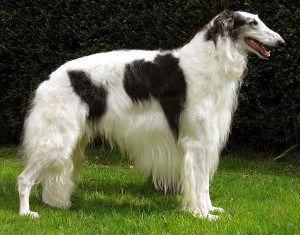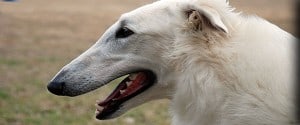Common Name: Borzoi
Other Common Names: Russian Wolfhound
Scientific Name: Canis familiaris
Group: Hound Group
Origin or Range: Russia
Relative Size: Much Larger Than Average
Average Lifespan: 13 year(s)
Compatibility: Average
The Borzoi rarely barks, and overall, they are very calm and quiet. The Borzoi is a “sight hound” with a lean, muscular build that 
However, they may not get along with children, so they should be supervised. They may also get along with small animals, however, if they run into them outdoors, their hunting instinct may take over. Some Borzoi can be aloof, and they are also slow to mature.
The Borzoi looks a lot physically like a Greyhound with long hair. They will grow to a height of 26 to 28 inches and they will weigh in between 60 and 105 pounds.
Their coats are long and silky, and they may be flat, wavy, or curly. It is short and smooth on the head, ears, and the legs. Around their necks, the fur is thick and curly. The most common coat colors are black and white, black tan and white, liver and white, tan and white, and white with orange spots.

Their coats do shed, and they need to be brushed every other day. They also need a fair amount of exercise to keep them fit, such as several daily walks. Breed-related health concerns include bloat, hypothyroidism, and progressive retinal atrophy.
